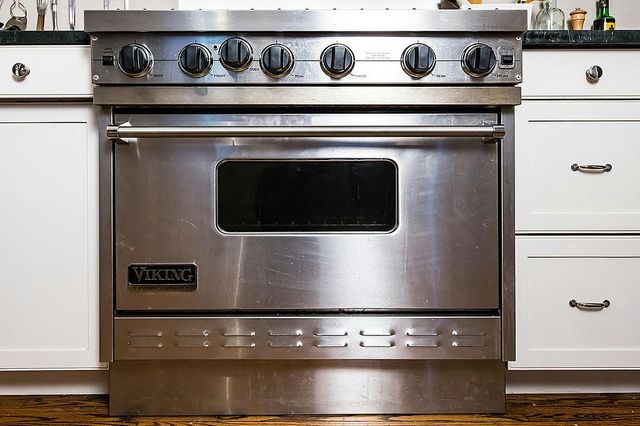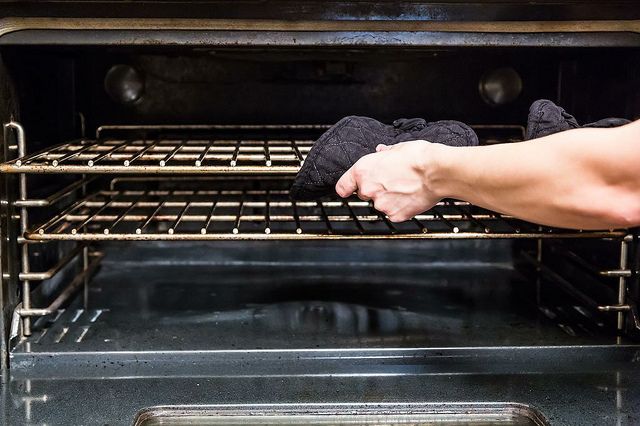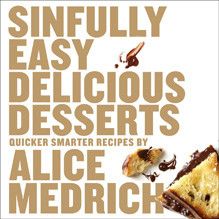Popular on Food52
9 Comments
Carole B.
December 22, 2020
My cheesecake cracked. Do your rack placement rules apply to cheesecake and cakes?
Loretta L.
August 18, 2017
I have moved into a house (renting) for which the previous owner left no manuals for the appliances. I also am accustomed to an electric range and this house has a good gas range. Tell me, HOW do I determine where the center rack is? The manual for my old range was very specific on which rack position is the center.
Meaghan
February 21, 2014
How does time change when using two racks of cookies vs only one rack? Say it's 10 minutes for one tray, how many minutes for two trays? The reason I ask is because I usually bake my cutout cookies by sight (because each shape has a different time). When there's one tray, they get slightly browned on the edges so I know they're done. When I put two trays in they take forever to brown and then they're overdone. Thanks!!
Soozll
September 10, 2013
I have an electric, single wall oven. Room enough for two cake pans "kitty-corner" on a rack so I have to rotate the pans. I've had terrible luck rotating the pans at the half way point of baking as the batter is still too soft..so I wait until it's about 3/4 of the way done, when the batter is well set, before rotating them. I also have 4 rack positions. I concluded that the rack at the lower third puts the item to be baked at the center of the oven. The lowest rack is just two inches above the bottom element and puts the pan at the true third section of the oven. I've found it too hot on the bottom of the pan for baking anything but pies and even then I rotate the pie to the upper third at the half way point to get the crust brown the way I like it. More attention should be paid to rack positioning on recipes. So glad you wrote about this, Alice.
SPark0101
September 10, 2013
My oven, unhelpfully, only have 4 levels, so I have no true middle rack. Am I right to assume you would recommend baking a single pan more toward the bottom than toward the top?
PRST
September 9, 2013
Home convection ovens are nothing but a fan moving air and not that well. Yes, differences exist between brands. I've nixed using convection and, I have experience on many high end brands. Next oven will be a commercial model. Just my experience.....
Alice M.
September 9, 2013
My comments (as you will have guessed!) pertain to still ovens, not convection ovens. In theory convection ovens are supposed to bake so evenly (at any level) that rack position and rotation should be irrelevant. My experience with home convection ovens is limited as I do not own one! When I do encounter them, I notice that they do not necessarily bake evenly and I have to watch them like a hawk. The manufacturer of the oven should be the first source or knowledge or information for each brand. And you have to get to know your specific oven. Thirty some years ago, it took weeks to work out the kinks and learn how to use our professional ovens in my bakery….if that tells you anything. Bottom line, Dacor probably has a lot of information about using the oven…I would start there AND start keeping your own notes. Alas, no easy answers!
AntoniaJames
September 9, 2013
Thank you. Interestingly, the helpful culinary expert at the showroom in South SF recommends using "Pure Convection" as opposed to "Convection Bake" for everything. I haven't asked her specifically about baking things like cookies and pies, etc., but I probably will now. I recently adapted your excellent recipe for Double Crust Apple and Apricot Pie from F&W, taking to heart the instructions to use a glass pie plate, placed in the lower third of the oven. It was my best solid top crust apple pie ever. (And I've made dozens, over the years.) I grew up baking four or five times a week in an ancient, quirky, perpetually unreliable gas oven, so I check and rotate, as necessary, out of habit, even with the Dacor. Having learned to bake from an equally ancient (but generally quite reliable) edition of the Joy of Cooking, which did not address this at all, I've never paid much attention to shelf placement. (The silhouette illustrations in that volume are charming, though.) These rules of thumb are helpful. ;o)
AntoniaJames
September 9, 2013
How do the rules change for convection ovens? (Experience with my terrific Dacor range has taught me that a modest amount of rotation is necessary, depending on the recipe, despite what proponents of convection baking say.) Does it depend on the oven, making rules of thumb difficult to articulate? Do you have an opinion as to whether convection should or should not be used? Thank you. ;o)




See what other Food52 readers are saying.